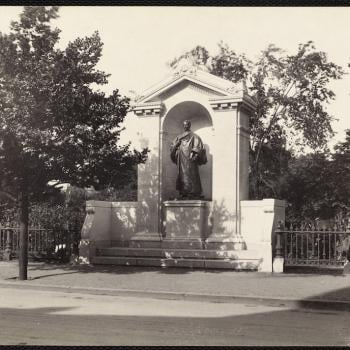This morning I opened the New York Times online and saw that a scholarly consortium has brought the scattered parts of the Codex Sinaiticus together online. It is a very important document, being the oldest extant collection of what we think of as the “New Testament,” if enriched with two texts not considered canonical by most modern Christian churches…
Which set me to thinking a bit about sacred texts.
Yesterday we covered some three hundred fifty miles from Fort Bragg to Coos Bay. We clung, as best we could to the coast. As we drove along, as we stopped at various vistas, I found myself thinking of something the Sufi sage Inayat Khan observed. Later with a little rummaging around the web I found, if not exactly what I had been thinking, something close.
“It is said, ‘Cry aloud the name of thy Lord, the most beneficent, who hath by his nature’s skillful pen taught man what he knew not,’ which means: who has written this world like a manuscript with the pen of nature. If one desires to read the Holy Book, one should read it in nature.”
Here God gives us as a primary text nothing less than nature itself.
Ralph Waldo Emerson in his monumental essay, Nature, says much the same thing.
For me, however, neither statement is quite it. While I don’t believe either Inayat Khan or Emerson were suggesting a complete break between nature and the divine, the language of text implies separation and needs further addressing.
Now there is a subtle truth in seeing author and text, now this, now that… Still, it implies a pure dualism, a break between the world and the divine, and in that sense positing an author beyond the text isn’t how I’ve encountered reality.
Back at General Assembly during the debates on a draft replacement for the UU Principles and Purposes one person who objected to the draft language found the substitution of respect for the interdependent web with reverence for the web unacceptable. I don’t want to put words into her mouth but it seemed she had two objections. One was that we shouldn’t worship matter, which is finite. And reverence is close enough to worship to fall within that objection. And the other was that nature “red in tooth and claw,” was just to horrific to deserve reverence…
Those observations have stuck with me, and I found myself ruminating on them as we drove up the coast. Mostly we were sheltered from the harsh aspects of the natural on this drive. A dead cat, obviously a pet, lying in the road. The hint of the power of nature in the shape of rocks and bend of trees and the swoop of a hawk. Not much harder than that on this trek… But enough for the active imagination to recollect Hindu versions of the divine as creator and sustainer and as destroyer. “Lo, I am Death, destroyer of worlds” hangs behind that hawk’s rapid descent out of the sky, even what it was seeking was hidden beyond the curve of a hill.
Nature, god, death, all one…
For me the natural world is as close to eternal as we humans need care about. Although it strikes me that within the great play life and death each has a place, each is a face of reality. Eternal life, and death eternal: one thing. But then I’ve spent lots of time on the Zen pillow, just looking. And one need not look long to discover how things are connected, in flux, now this, now that, now not this, now not that.
As to the face of nature as the face of reality as text, author and the thing in itself, the Zen teacher Dogen commented on it all in the fourteenth fascicle of his Shobogenzo, the Sansui gyo.
“Mountains and waters right now are the actualization of the ancient Buddha way. Each, abiding in its phenomenal expression, realizes completeness. Because mountains and waters have been active since before the Empty Eon, they are alive at this moment. Because they have been the self since before form arose they are emancipation realization.”
The deal is that each and everything in its separateness is also one. And the one manifests within separateness.
There is a dynamic in this.
It births the world. And it births the world we actually live in, the one that certainly is red in tooth and claw, and it births the world that is unspeakably beautiful and is filled with sorrow and joy.
Which brings me to another complicated word.
I find the world love points to this reality as we experience it in our human condition. Love, with its Indo European root in desire is both divine and diabolic.
It all comes together in how we hold it.
We hold tight and Satan and his minions ride with the vultures. One love.
We hold it with open hands, loving fully, but openly, and Guanyin manifests, pouring the waters of mercy upon the world. Another love.
I can go with awe.
I can go with respect.
And I can go with reverence in a shut my mouth, this is it, up close and personal, ultimate up close and personal sort of way…
All lessons taught in nature’s sacred texts.
All revealed on a walk on the beach…












